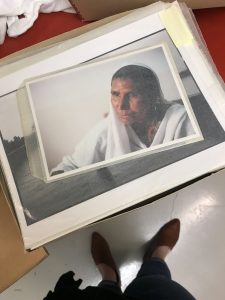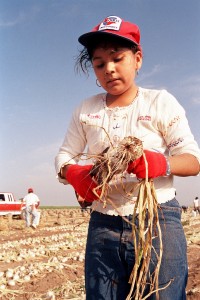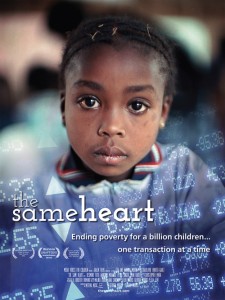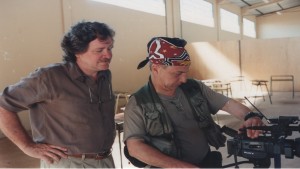[slideshow_deploy id=’8244′]
On display at the UConn Avery Point campus this fall is U. Roberto Romano Papers: Photographs of Child Labor in Coastal Countries. This exhibition is an exciting mix of student work, fine art prints from the archives, and never before exhibited work from the fishing platforms off the coast of Indonesia.
U. Roberto (Robin) Romano (1956-2013) was a prolific photographer and documentarian in the late 20th century. He created work all over the world primarily in Africa, India, the Middle East and the United States that documented child labor and human rights issues. He created the first feature length film on child labor titled Stolen Childhoods with his long time creative partner Len Morris. On display at Avery Point are fine art prints from Stolen Childhoods that were donated to the archives in 2009. These prints are beautiful examples of his early analog work that was shot in both color and black and white. The descriptions of these photographs detail the lives of children trapped in the horrors of child labor in the late 20th century.
In addition to fine art prints, this exhibition will also showcase the student work that has been created from this collection. Dr. Fiona Vernal, Associate Professor of History at UConn, led her students this past spring to create an exhibition on child labor in Africa called The Hidden Costs of Chocolate: How Child Labor Became a Human Rights Crisis. The panels that they created utilize Robin’s photographs to put faces to the countless children that have been victims of child labor in the chocolate industry. They explain what the children are doing on the cacao farms, the tools they use, and how the industry is slowly eliminating the use of child labor through legislation. It is an excellent example of how the Romano papers are being used on campus to educate students, scholars and the public on child labor. There will also be samples of work created by Professor Anna Lindemann’s Digital Media & Design students.
The final element of this exhibition are the never before exhibited jermal prints. These prints were created specifically for this exhibition and showcase Robin’s work from the jermals off the coast of Southeast Asia. A jermal is a fishing platform about the size of a tennis court perched out at sea. Children on these platforms are out there months at a time working for as much as 20 hours a day fishing for tiny fish called teri. They leave their families to do this work, working long hours out at sea for little pay. Robin’s photographs show the lives of these child workers and the greater system that they are victims of. The photographs on display are just a sample of robin’s oeuvre which can be seen in the repository through the following link: https://lib.uconn.edu/libraries/asc/collections/the-u-roberto-robin-romano-papers/
U. Roberto Romano Papers: Photographs of Child Labor in Coastal Countries will be on display from September 13, 2018 to December 16, 2018 at the Alexey Von Schlippe Gallery in the Branford House on the Avery Point Campus at the University of Connecticut.
When: 9/13/18 – 12/16/2018 (Opening Reception 9/12/18 from 5:30-7:30pm)
Where: Branford House on the Avery Point Campus (1084 Shennecossett Rd, Groton, CT 06340)






